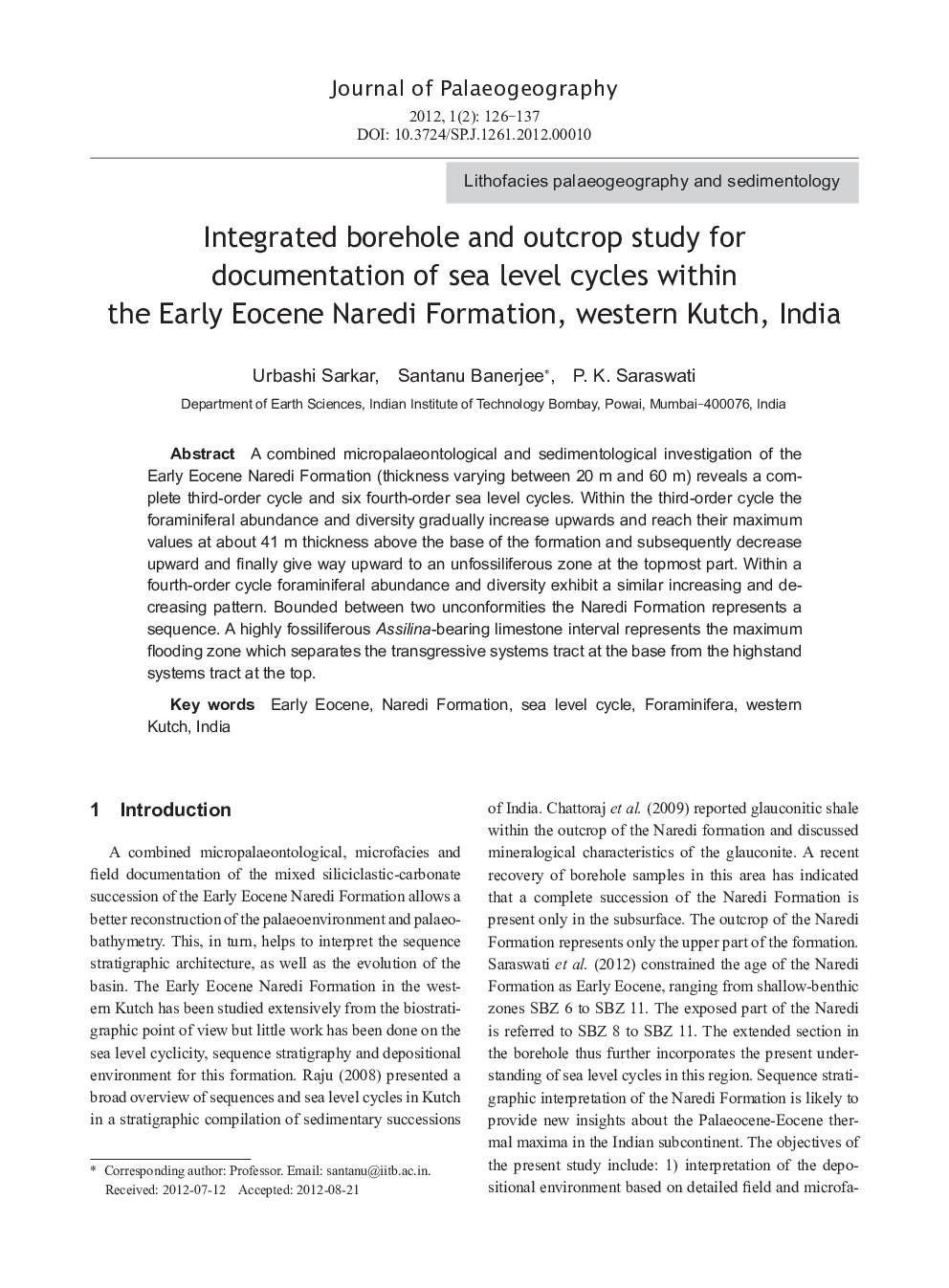| Article ID | Journal | Published Year | Pages | File Type |
|---|---|---|---|---|
| 4581061 | Journal of Palaeogeography | 2012 | 12 Pages |
A combined micropalaeontological and sedimentological investigation of the Early Eocene Naredi Formation (thickness varying between 20 m and 60 m) reveals a complete third-order cycle and six fourth-order sea level cycles. Within the third-order cycle the foraminiferal abundance and diversity gradually increase upwards and reach their maximum values at about 41 m thickness above the base of the formation and subsequently decrease upward and finally give way upward to an unfossiliferous zone at the topmost part. Within a fourth-order cycle foraminiferal abundance and diversity exhibit a similar increasing and decreasing pattern. Bounded between two unconformities the Naredi Formation represents a sequence. A highly fossiliferous Assilina-bearing limestone interval represents the maximum flooding zone which separates the transgressive systems tract at the base from the highstand systems tract at the top.
